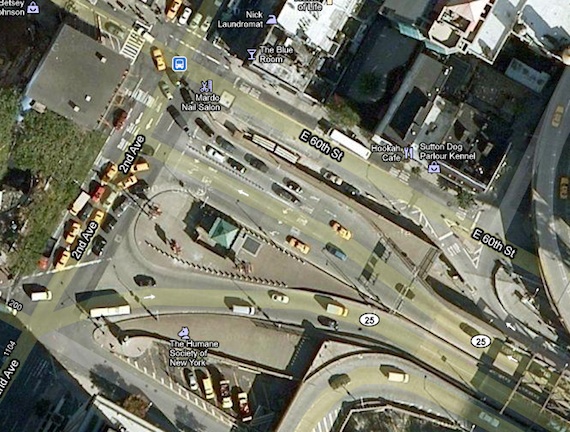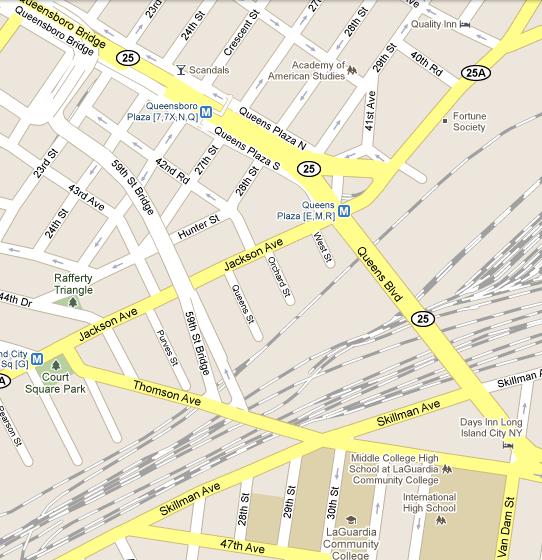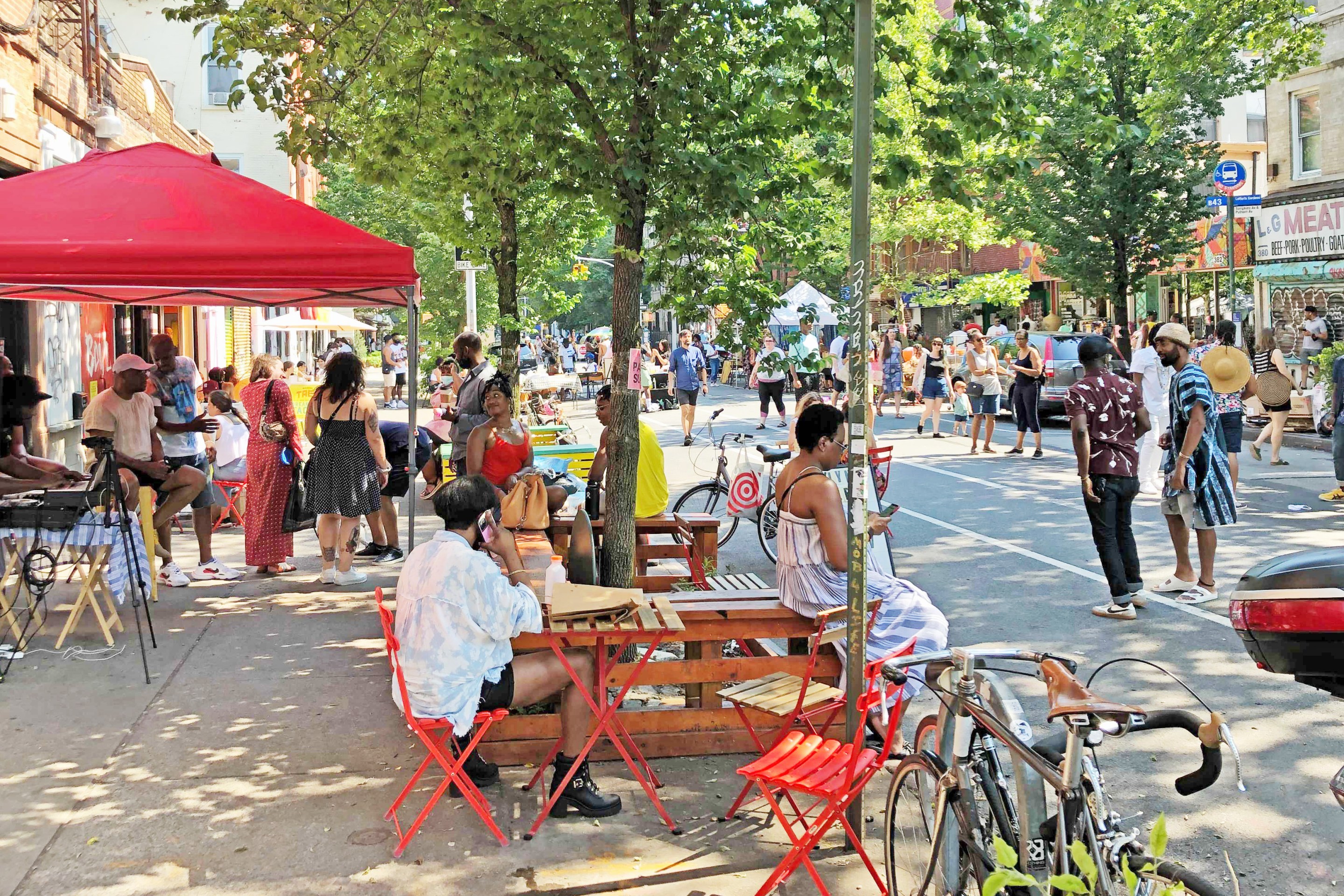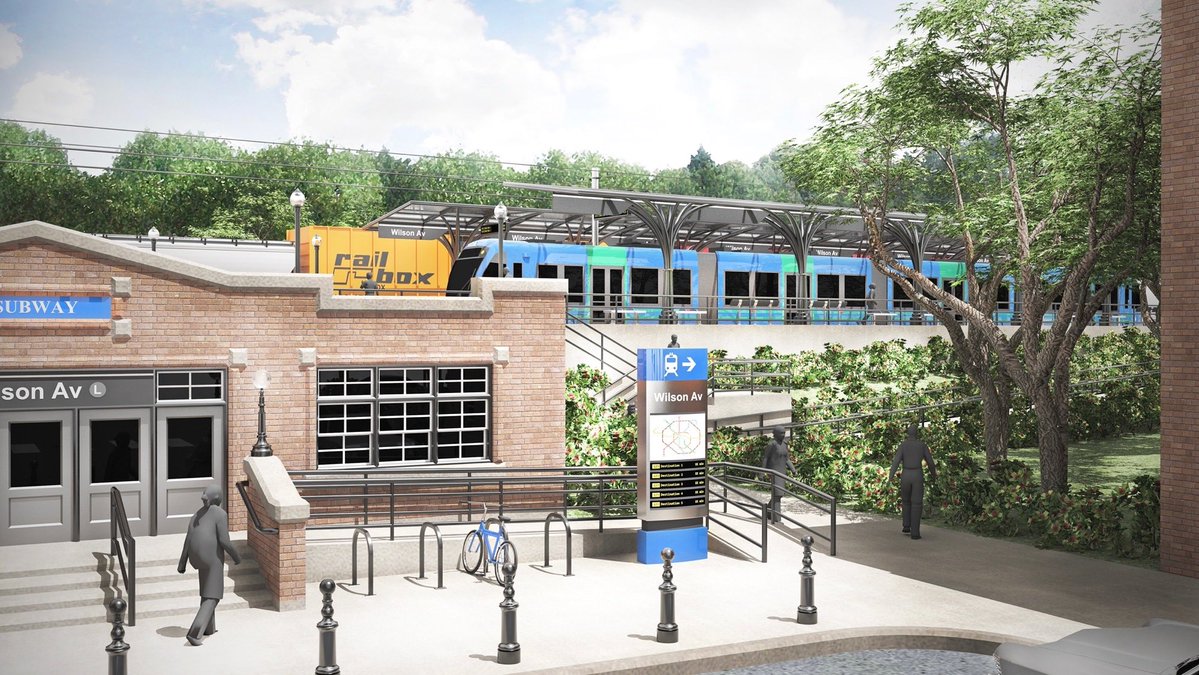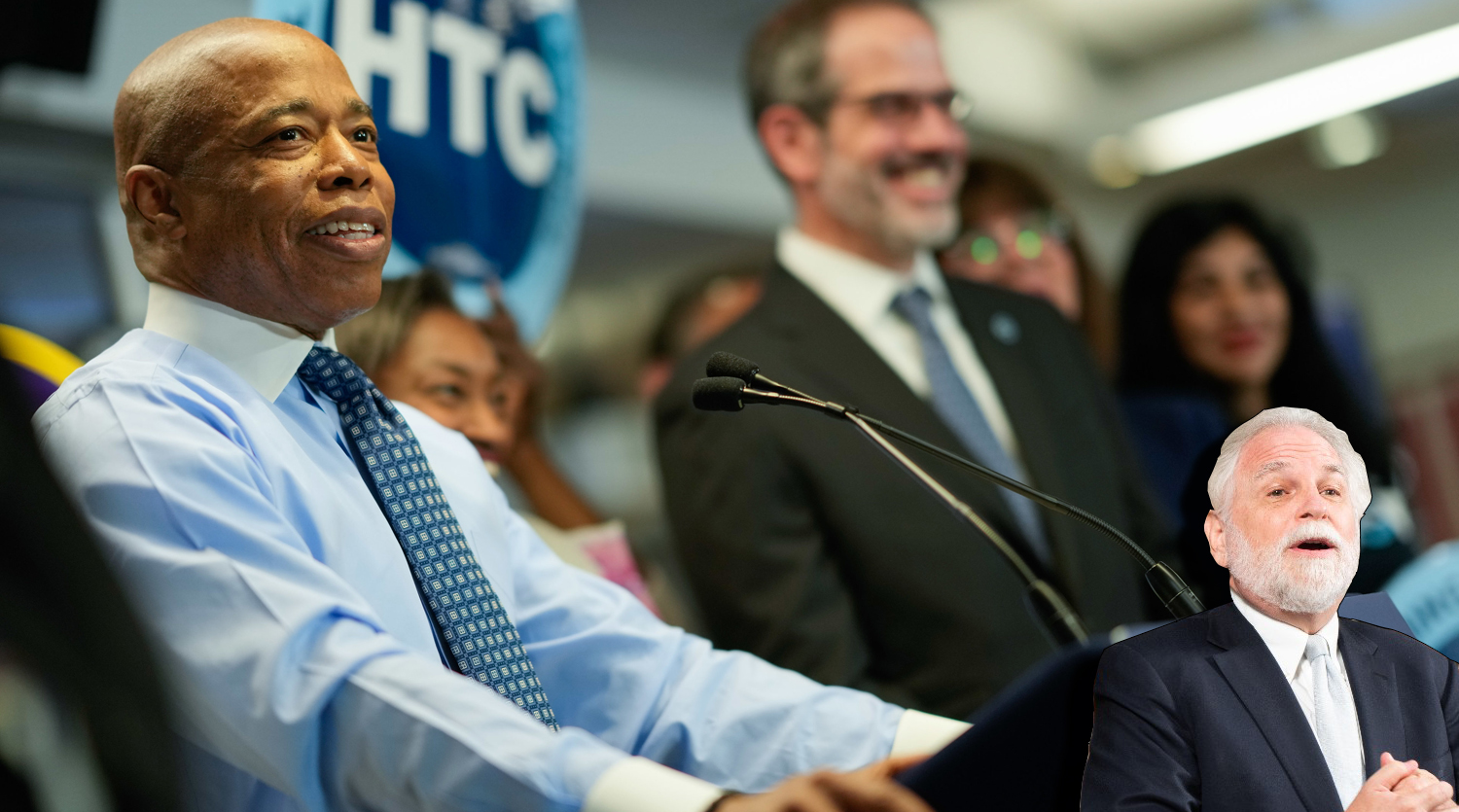Bending to East Side Traffic, DOT Limits Plan for Faster Buses, Safer Cycling
3:10 PM EDT on May 3, 2011
Not so long ago, it was common to hear NYCDOT staff say their job was "to keep the traffic moving." Engineers working from "the motorist's viewpoint" ran the show, much like they did in the 1950s. Those days are thankfully over. Today's DOT prioritizes safety and sustainability and has compiled a lengthy track record of innovation in a few short years. But as the transportation committee of Manhattan Community Board 6 learned last night, the old emphasis on keeping the traffic moving still restrains how far the department will go to improve conditions for other modes.
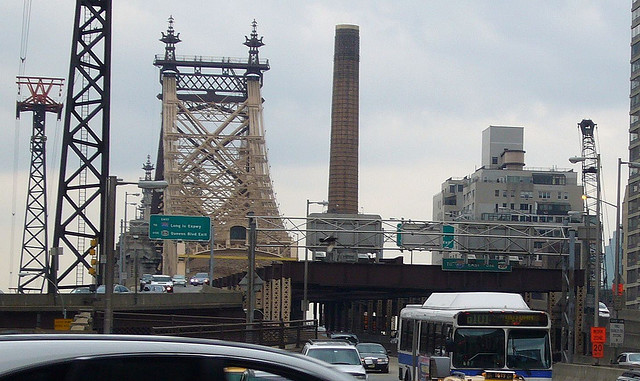
At the CB meeting, DOT presented plans to speed buses across the Queensboro Bridge and extend the bike lanes on First and Second Avenues from 34th Street to 57th Street. Those changes are underwhelming: mostly traffic signal tweaks for buses, and mostly shared lanes for cyclists.
In explaining why only minor tweaks will be employed to help Queensboro Bridge bus riders and why protected bike lanes won't be built through Midtown, DOT officials made it clear that anything that slows traffic is off the table. When push comes to shove, in this case, DOT's other goals are getting trumped by traffic. One can only imagine what might have been if Albany had enacted congestion pricing, easing the peak hour crush of cars on this free bridge.
The need for faster bus service across the Queensboro is pressing. During the evening rush, there are two buses crossing the bridge every minute. They spend their time in grinding traffic, however. From 5:00 to 6:00 p.m., buses travel at only 12.2 miles per hour. That speeds up to 21.2 mph just an hour later.
Eric Beaton, the director of transit development at DOT, defined the department's goal for the project as increasing bus speeds "without having too much of an impact on the many cars and other people that use the bridge."
The limits of that approach quickly became clear. One of the four improvements proposed would grant eastbound buses at 57th Street and Third Avenue heading onto the bridge a leading green light so that they can merge from the right side of the street to the left. The buses would get their green during an already-installed leading pedestrian interval at the intersection. "We're not taking any green away from cars," promised Beaton.
The other modifications are equally minor. When the Q60 needs to turn left from 60th Street onto Second Avenue, for example, it will get a short leading interval so that it can get a head start and avoid conflicts with traffic exiting the bridge. Again, said Beaton, the change wouldn't slow the traffic pouring off the Queensboro.
The bus stop where the Q60 sits before making that turn will also be lengthened. A rerouted Q101 will be able to avoid an extra half-mile loop it currently makes by sharing that longer bus stop with the Q60.
On the Queens side of the bridge, buses turning right from Thomson onto Van Dam will get a little bit of extra time, which will come during an existing left-turn phase. During the evening rush, 100 express buses will take advantage of this signal change.
The final piece of the Queensboro package is a worthy safety project, but it will actually slow buses slightly. At Queens Plaza North, buses turning onto the bridge have to cross the new bike lane, and both currently get a green light at the same time. DOT plans to grant the cyclists a ten second "leading bike interval" so they can get out into the intersection and be visible to bus drivers. That's good for safety, but doesn't help bus speeds.
When asked how much time these improvements would save bus riders, Beaton admitted "it's relatively small amounts." Instead, he said, the changes would mainly improve reliability by preventing the very worst delays.
Added Ted Orosz, the director of long range bus planning for New York City Transit, "Even if it only saves two minutes, it's saving two minutes at the most important spot." If the Q60 gets delayed at the very beginning of its route in Manhattan, for example, "you're going to get uneven boarding all the way to Jamaica," and even worse bus bunching.
The kind of change that's really needed to make buses go faster -- dedicated lanes free from the crush of traffic -- only earned the promise of further study, including further traffic analysis. That's despite the fact that exclusive bus lanes were the top suggestion of both local and express bus riders in a DOT survey. According to Beaton, DOT is considering a reversible bus lane -- taking space from traffic heading in the off-peak direction -- adding though "it takes a lot of work to move the poles every day," and funding would need to be found to do so.
Creating a bus or carpool lane across the Queensboro Bridge was a promise in the original PlaNYC, and DOT's proposal for providing buses with priority treatment over the bridge was supposed to be revealed last November. The specific promise of a dedicated lane on the Queensboro was removed in PlaNYC 2.0, replaced with a pledge to "improve bus priority."
In CB 6's discussion of the First and Second Avenue bike lanes, it became equally clear that bike infrastructure had been sacrificed to keep cars moving. "There's extremely heavy traffic in this area," said DOT bike and pedestrian director Josh Benson. "We need all five lanes for cars."
Members of the community were quick to point out that extremely heavy traffic doesn't have to necessitate leaving out bike lanes, depending on your goals. "That same lot of traffic that makes you concerned about cars makes me feel like I'm putting my life at risk," said Flannery Denny, a cyclist who lives on the Lower East Side and works on the Upper East Side. "Biking to work is absolutely not an option for me."
The disappointment of DOT's justification for the lack of high-quality bike facilities in Midtown was only heightened by seeing the agency's stats on the success of the bike lanes downtown. If the new separated bike lanes and pedestrian refuge islands cut injuries by 17 percent, wouldn't it be worth extending them north? Benson also pointed out that bike volumes on First and Second at 50th Street are almost exactly as high as they were in the East Village before the installation of the protected lanes, implying that the bump in ridership could be similar.
DOT said that buffered bike lanes instead of shared lanes in Midtown are still on the table, but they are asking for a strong CB 6 statement of support. CB 6 did call for buffered lanes in its resolution last year, but Benson said that "we didn't really feel like we got strong support of that proposal." He said DOT reverted to its original proposal of shared lanes "in the interest of keeping the project moving," suggesting DOT is extremely spooked about the possibility of further opposition to its bike program.
Committee chair Fred Arcaro put off discussion of the bike lanes and a vote until a later meeting, despite -- or perhaps because of -- the standing room only crowd who had come specifically to talk about that issue. Arcaro has limited discussion and been accused of mismanaging the community board's procedures to work against livable streets projects before.
Last night, bus riders and bike riders saw DOT unwilling to improve their trips if it means slowing Midtown traffic at all. That suggests one more reason congestion pricing or bridge tolls are so necessary. If high traffic volumes mean DOT won't fight for street safety or efficient transit, high traffic volumes have to go.
Stay in touch
Sign up for our free newsletter
More from Streetsblog New York City
Wednesday’s Headlines: Four for Fifth Edition
The good news? There's a new operator for the Fifth Avenue open street. The bad news? It's four blocks, down from 15 last year. Plus other news.
MTA Plan to Run Brooklyn-Queens Train on City Streets a ‘Grave’ Mistake: Advocates
A 515-foot tunnel beneath All Faiths Cemetery would slightly increase the cost of the project in exchange for "enormous" service benefits, a new report argues.
Full Court Press by Mayor for Congestion Pricing Foe Randy Mastro
Pay no attention to that lawyer behind the curtain fighting for New Jersey, the mayor's team said on Tuesday, channeling the Wizard of Oz.
Tuesday’s Headlines: Valley of Political Death Edition
Did you see the new poll showing congestion pricing is really unpopular? Ignore it! Good times are coming. Plus other news in today's headlines.
Open Streets Groups Warn of Extra Red Tape to Run Events
Two weeks notice for hopscotch or a yoga class?
